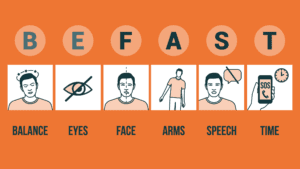Medical experts are underscoring the need for awareness and education on stroke prevention, early detection, and immediate intervention.

Actor Mithun Chakraborty recently suffered an ischemic stroke. (Wikimedia Commons)
Mithun Chakraborty, the iconic figure from the golden era of Indian cinema — best known for Disco Dancer — found himself under the care of Apollo Multispeciality Hospitals in Kolkata, following an episode of weakness in his right upper and lower limbs. The hospital, in a subsequent statement to the media, confirmed that the actor had suffered an Ischemic Cerebrovascular Accident — aka Stroke.
In the wake of this incident, medical experts are once again underscoring the vital need for awareness and education on stroke prevention, early detection, and the imperative need for immediate medical intervention to mitigate long-term effects and enhance recovery outcomes from an ischemic stroke.
An ischemic stroke, the condition Chakraborty was diagnosed with, results from an obstruction in a blood vessel that supplies blood to the brain.
Dr Satish Chandra, a renowned neurologist at Apollo Hospitals in Bengaluru, explains to South First, “This obstruction leads to a reduction in blood flow and oxygen to the brain, potentially causing significant damage if not treated promptly.”
The medical team at the hospital promptly executed a series of laboratory and radiology investigations, including an MRI of the brain, to gauge the severity of the stroke.
The official statement from the hospital brought a sigh of relief to fans and well-wishers. “Mithun Chakraborty is recuperating well, is fully conscious, well-oriented, active, and has consumed a soft diet.” The actor’s recovery is under the vigilant care of a dedicated team of specialists, comprising a neuro-physician, cardiologist, and gastroenterologist, ensuring a comprehensive approach to his recuperation.

BEFAST is the commonly used stroke acronym to help the public easily remember the signs of a stroke. (Ohio State Health)
Ischemic strokes constitute a significant majority of stroke cases, particularly prevalent among individuals in the senior age group, say doctors.
The primary cause of an ischemic stroke is the narrowing or blockage of arteries to the brain, stemming from factors such as the build-up of fats, cholesterol, and other substances on the artery walls, blood clots originating from the heart or major arteries, and conditions like atrial fibrillation or heart valve disease that can heighten the risk of clot formation.
Symptoms of stroke include:
While anyone can fall victim to an Ischemic stroke, certain factors heighten the risk.
Dr Chandra emphasises, “Risk factors include high blood pressure, smoking, diabetes, high cholesterol levels, obesity, cardiovascular diseases, a sedentary lifestyle, and a family history of stroke or heart attack.”
Agreeing, Dr Sudhir Kumar, renowned neurologist from Apollo Hospitals in Hyderabad, tells South First, “High blood pressure, high cholesterol, and diabetes are a few factors that increase the risk for the population above 60 years.”
Interestingly, hospital data suggests a higher incidence of ischemic strokes in men compared to women. Dr Sudhir adds that post-menopausal women, especially those with heart-related diseases, smoking habit, blood pressure issues, use of oral contraceptive pills, and diabetes, face an increased likelihood of ischemic strokes.
Dr Sudhir also sheds light on another condition known as Cerebral Venous Thrombosis (CVT), causing clotting of blood in the brain veins, primarily observed in younger women.
“When I was with CMC Vellore, we would see many such cases, mostly in women during their postpartum. Here, due to traditional practices, women used to be kept inside a room with very little ventilation, without proper food and water, leading to anaemia and dehydration, resulting in CVT. However, the incidence has lowered due to good postpartum care,” Dr Sudhir recalls.
Ischemic strokes pose a life-threatening risk and are a major cause of disability. Severity and outcomes vary based on the stroke’s location and extent, the speed of treatment administration, and the individual’s overall health. Possible complications include paralysis, speech difficulties, memory and cognitive deficits, and emotional challenges.
Doctors stress the importance of reaching the hospital at the onset of initial symptoms, which include sudden numbness or weakness on one side of the body, confusion, difficulty speaking, visual impairments, walking problems, loss of balance, and unexplained severe headaches.
Diagnosis typically involves imaging tests like MRI or CT scans to visualise the brain and detect any blockages or damage. Treatment options may include medications to dissolve clots and prevent new ones from forming, as well as lifestyle changes to manage risk factors like hypertension, diabetes, and high cholesterol.

Jul 26, 2024

Jul 26, 2024

Jul 26, 2024

Jul 26, 2024

Jul 26, 2024

Jul 26, 2024